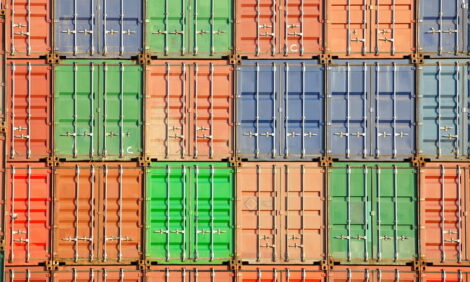



Anaerobic Digestion: Future of Renewable Energy?
UK - Across Europe there are more than 4,000 anaerobic digester plants, but only some 25 of those are in the UK.However British interest in anaerobic digestion (AD) as a source of renewable energy is increasing rapidly and was the subject of a packed workshop at the British Pig & Poultry Fair 2010, led by BPEX’s environment expert Nigel Penlington and producer James Hart.
Mr Penlington said, “The opportunities that AD offers are multiple and pig farmers are well placed to develop biogas production and create new income streams from the sale of electricity, heat or gas into the renewable energy marketplace. AD can also reduce the carbon footprint of the site and aid odour control.”
“Biomethane can be produced by purifying the biogas produced by AD. Provided it meets the required standard and it is on a large enough scale, this can be sold to gas providers, or compressed to make CNG (compressed natural gas) vehicle fuel.”
What the gas will be used for is dependent upon quantity and quality, local circumstances, such as demand, and proximity to suitable electricity or gas mains.
Biogas can also be used to fuel boilers and heaters, or combustion engines to produce electric and heat energy. When engines are used to produce heat and power, it is known as a combined heat and power plant (CHP) and the overall efficiency of energy capture can be very high.
The electricity produced from AD can be used at point of production or sold into the National Grid. Heat is normally used close to the site of production, although for larger capacity plants it may be sold, for example to a District Heating Scheme.
The sludge formed by digestion is known as digestate and can be a useful source of plant nutrients for crop production, replacing manufactured fertilisers, subject to registration of an Exemption with the Environment Agency.
Digestate is typically a low odour, nitrogen rich liquid; it is treated as slurry for the purposes of Nitrate Pollution Regulations when spread in Nitrate Vulnerable Zones (NVZs). If derived from imported feedstock however the digestate is regarded as waste and a license is required under the Environmental Permitting Regulations (EPR) to spread it.
Mr Penlington said, "AD also offers the potential to reduce the carbon footprint of livestock farms.
“In Western Europe commercial exploitation of the methane produced from stored manures has, until recently, not been universally viable. However advances in technology, experience gained as a result of greater uptake in countries such as Germany and the recognition of the potential of AD presents opportunities for reducing emissions of this harmful Greenhouse Gas, not only form livestock manures but other organic wastes, has renewed interest.”
Various forms of financial support provide further incentives to those considering AD. Renewable Obligation Certificates (ROCs) are issued to accredited generators for each Mega Watt hour (MWh) of electricity produced from anaerobic digestion, and for technologies below 5MW Feed In Tariffs (FITs) are paid for total electricity produced plus a supplement for electricity actually fed into the grid. In addition, money will be saved by not buying-in electricity off the grid. In the near future it is also anticipated that Renewable Heat Incentives (RHIs) will be available to pay for heat generated by AD.
Grants are also available in certain circumstances. The Rural Development Programme funds larger renewable energy projects via the Regional Development Agencies and funding may also be available from the next round of the Bio Energy Capital Grants Scheme (2010). It is important to note that grant funding may ‘forfeit’ support from tariffs, so if you are considering taking advantage of one, check with the funding body before accepting a grant.
Producer James Hart emphasized that “with the correct conditions and in the right situation AD offers significant potential as a source of renewable energy. It is not suitable for everyone but should be given some serious consideration if the conditions are suited.”
BPEX has produced a factsheet on its Environment Hub about AD, which can be downloaded by clicking here.
An online cost calculator is available to evaluate the financial viability of different AD feedstock systems on the National Non-Food Crops Centre's web site [click here].







